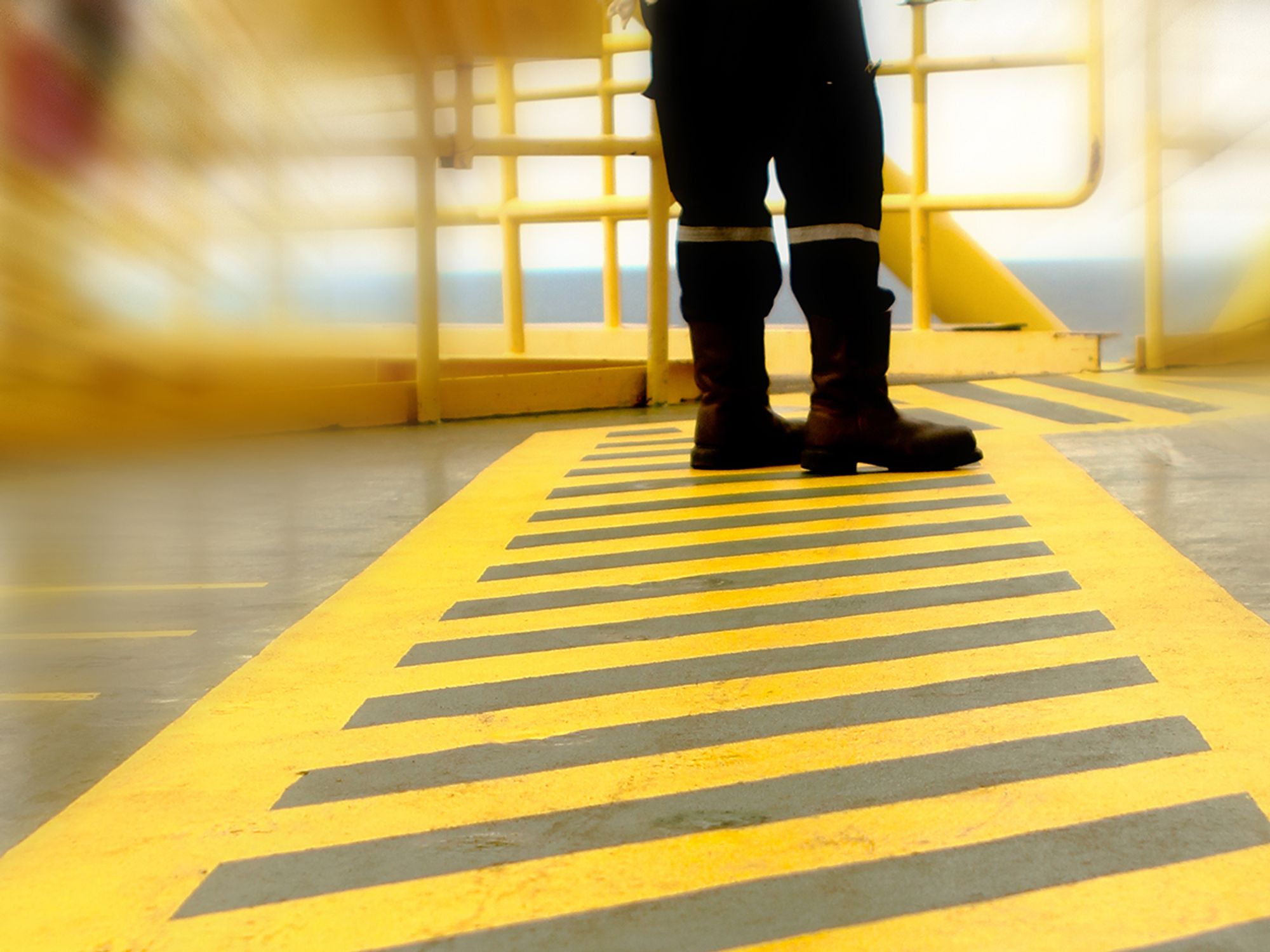Formats, color schemes, materials, construction, and locations

- Floor markings come in a variety of color schemes, while floor signs are configured in a variety of shapes.
- Floor markings and floor signs are vulnerable to employee and equipment traffic and should be chosen for durability but are not suitable for some locations for this reason.
Formats and color schemes
Floor markings are applied in a solid color, angled bars of alternating color, a checkerboard of alternating color, a geometric combination of colors, or a photoluminescent application. Color selection of these markings often contrasts with the floor color and may depend on Occupational Safety and Health Administration (OSHA) 29 CFR 1910.144, American National Standards Institute (ANSI) Z535.1-1998, ANSI Z535.1-2011, ANSI Z535.1-2017, ANSI Z535.1-2022, and/or other applicable international, U.S., state, or local codes.
Floor signs are often configured in a circular or oval format or a rectangle with rounded corners, so the panels of the sign may be oriented differently than an ordinary safety sign. Floor signs are not required, but the employer may wish to follow the color schemes applied to regular safety signs per 1910.145, 1926.200, ANSI Z535.2-2011, and ANSI Z535.2-2017.
Materials and construction
While floor markings and floor signs are intended to be permanent, the downside is that they may deteriorate due to employee and equipment traffic. That means floor marking and floor sign media should be selected for durability.
Some floor signs come not only with a durable substrate but also an overlaminate, making it a two-step application for extra protection. The employer should look for floor signs with a simple outer shape, such as a circle or oval or a square or rectangle with rounded corners. Finally, floor signs should be maintained as instructed and as needed.
Locations
Floor markings are often located:
- Around repair, service, and assembly pits less than 10 feet in depth, as required by OSHA 29 CFR 1910.28;
- At the perimeter or edge of a defined area, such as a permanent aisle/passageway or work area;
- Solidly throughout an entire defined area; or
- In angled bars of color across a defined area.
Floor signs, on the other hand, are often placed on the floor:
- In front of hazardous equipment, such as electrical panels;
- At approaches to hazardous or regulated areas, such as areas where:
- Personal protective equipment (PPE) is required,
- Smoking is prohibited,
- Forklift traffic is possible, or
- Chemicals are stored;
- At approaches where admittance is restricted or permitted for authorized personnel only;
- In front of fire equipment, such as:
- Fire extinguishers,
- Fire hoses, and
- Fire alarms;
- In front of safety equipment stations, such as those for:
- First aid supplies,
- Defibrillators,
- Eyewashes,
- Spill response,
- PPE supplies,
- Lockout/tagout, or
- Safety data sheets;
- In front of waste disposal stations;
- To demarcate pedestrian aisles;
- Where employees or others are required or recommended to stand; and
- In areas where safety or policy reminders may reinforce training and signs.
Floor markings and floor signs may be infeasible or impractical in certain work settings, such as on dirt floors and floors having continuous concentrations of sand or dust, like foundries. Other marking methods, such as pillar markings, flags, traffic cones, barrels, and signs, may be an appropriate alternative to floor markings and floor signs if employees are trained to recognize them.
